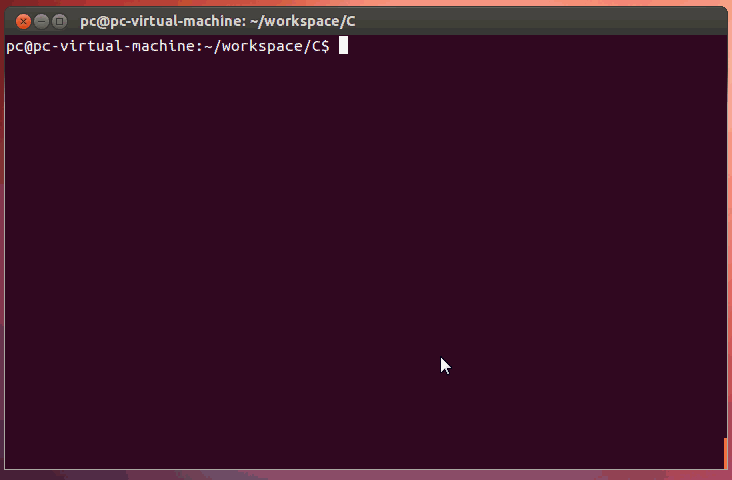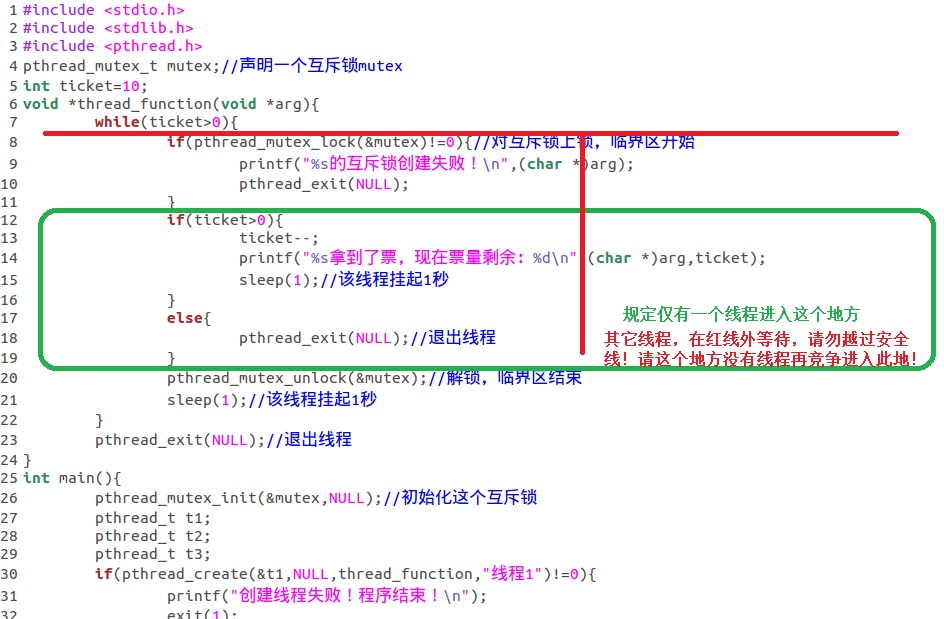线程最大的特性就是可以一个代码,多个线程同时执行,从而极大地提升程序的运行速度。然而,在线程并发的同时要注意,互斥的情况,比如如下的一个模拟一个最近话题的抢票程序,显然设定的三个线程仅能有一个线程得到票,否则票会撕烂。这次的编程环境编程了LinuxC。
如下的线程互斥的程序,可以看到这个mutex程序的运行结果由于操作系统对线程的资源分配的不同而不同。

具体代码如下:
#include <stdio.h>
#include <stdlib.h>
#include <pthread.h>
pthread_mutex_t mutex;//声明一个互斥锁mutex
int ticket=10;
void *thread_function(void *arg){
while(ticket>0){
if(pthread_mutex_lock(&mutex)!=0){//对互斥锁上锁,临界区开始
printf("%s的互斥锁创建失败!\n",(char *)arg);
pthread_exit(NULL);
}
if(ticket>0){//如果还有票
ticket--;
printf("%s拿到了票,现在票量剩余:%d\n",(char *)arg,ticket);
sleep(1);//该线程挂起1秒
}
else{//否则退出
pthread_exit(NULL);//退出线程
}
pthread_mutex_unlock(&mutex);//解锁,临界区结束
sleep(1);//该线程挂起1秒
}
pthread_exit(NULL);//退出线程
}
int main(){
pthread_mutex_init(&mutex,NULL);//初始化这个互斥锁
//声明并创建三个线程
pthread_t t1;
pthread_t t2;
pthread_t t3;
if(pthread_create(&t1,NULL,thread_function,"线程1")!=0){
printf("创建线程失败!程序结束!\n");
exit(1);
}
if(pthread_create(&t2,NULL,thread_function,"线程2")!=0){
printf("创建线程失败!程序结束!\n");
exit(1);
}
if(pthread_create(&t3,NULL,thread_function,"线程3")!=0){
printf("创建线程失败!程序结束!\n");
exit(1);
}
pthread_join(t1,NULL);
pthread_join(t2,NULL);
pthread_join(t3,NULL);
//三个线程都完成才能执行以下的代码
pthread_mutex_destroy(&mutex);//销毁这个互斥锁
return 0;
}
线程互斥锁,应该作为全局变量声明,因为线程互斥锁会在主函数声明,线程执行函数内使用,之后,在主函数新建的三个线程,共同执行void *thread_function(void *arg);中的代码。
三个线程形成的互斥关系如下所示:

其实这与java本身就有的关键字synchronized是一模一样的,唯一不同是,LinuxC中的互斥锁还要自己声明,初始化,销毁而已。

